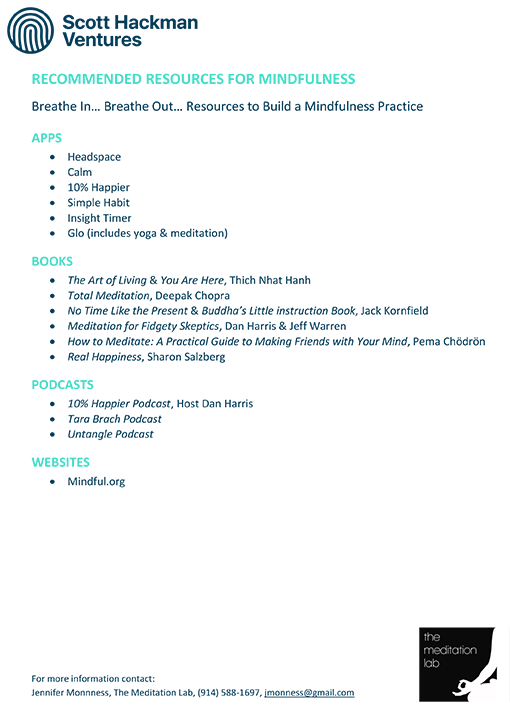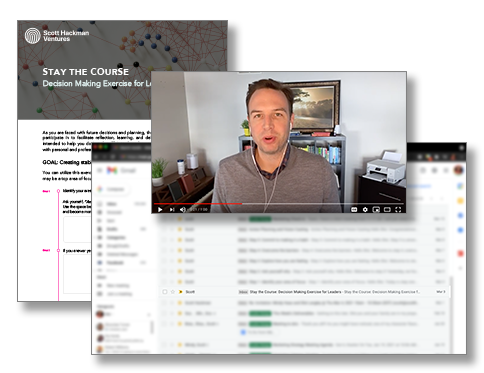Now, more than ever, leaders are experiencing high stress, burnout, and fatigue. However, it is possible to pivot to a greater sense of wellbeing in the workplace. Using time-tested mindfulness practices backed by brain science, you can learn to regulate your emotions, optimize your performance, and feel better in the workplace – and lead your team to do the same.
Mindfulness practices can vary from meditation to exercise, and it’s important to find the practice that works for you. Some leaders listen to music, some walk or swim, and some practice gratitude or empathy. The key is to find what is effective for your life and well-being, and then consistently practice it.
In a recent webinar with Jennifer Monness of The Meditation Lab, we had the chance to experience some different mindfulness tools for ourselves. Our group of leaders was led through a mindful body scan, a box breathing exercise, and a visualization. After these experiences, attendees expressed how refreshing it was to take a moment to relax and focus on their wellbeing in the middle of the workday, and several shared plans to use these techniques during stressful moments in their everyday lives.
Why Mindfulness
Some of the benefits of mindfulness include stress management, increased self-awareness, reduced negative emotions, increased imagination, creativity, patience and tolerance, and lower resting heart rate and blood pressure.
In the last few decades, research in support of mindfulness practices has been stacking up. In addition to literal centuries of people saying these techniques improved their lives, we can point to hard data.
For instance, we now know that meditation can increase gray matter in the brain. Gray matter is responsible for controlling fine motor skills and is involved in muscle control and sensory perception, including emotions, memory, speech, seeing, hearing, and decision making.
Mindfulness also helps to shift our brain activity from the amygdala, which processes emotions and drives the fight-or-flight response, to the prefrontal cortex, which is where our decision-making abilities operate from. In plain English, this means that mindfulness practices help us to respond calmly to threats, rather than reacting from a place of fear and overwhelming emotion.
How to Incorporate Mindfulness at Work
Once you have found mindfulness practices that work for you, how can you use them to improve your workplace experience? Jennifer had the following suggestions:
- In the morning, use breathwork to help you focus and activate your mind.
- Before a major presentation, take a few minutes to center yourself.
- At the end of the day, perform a body scan to trigger relaxation and help you leave “work mode.
Free Mindfulness Resources Tool
If you are convinced of the value of mindfulness to increase wellbeing in the workplace but aren’t sure where to start, we have a handy list of resources you can download.






